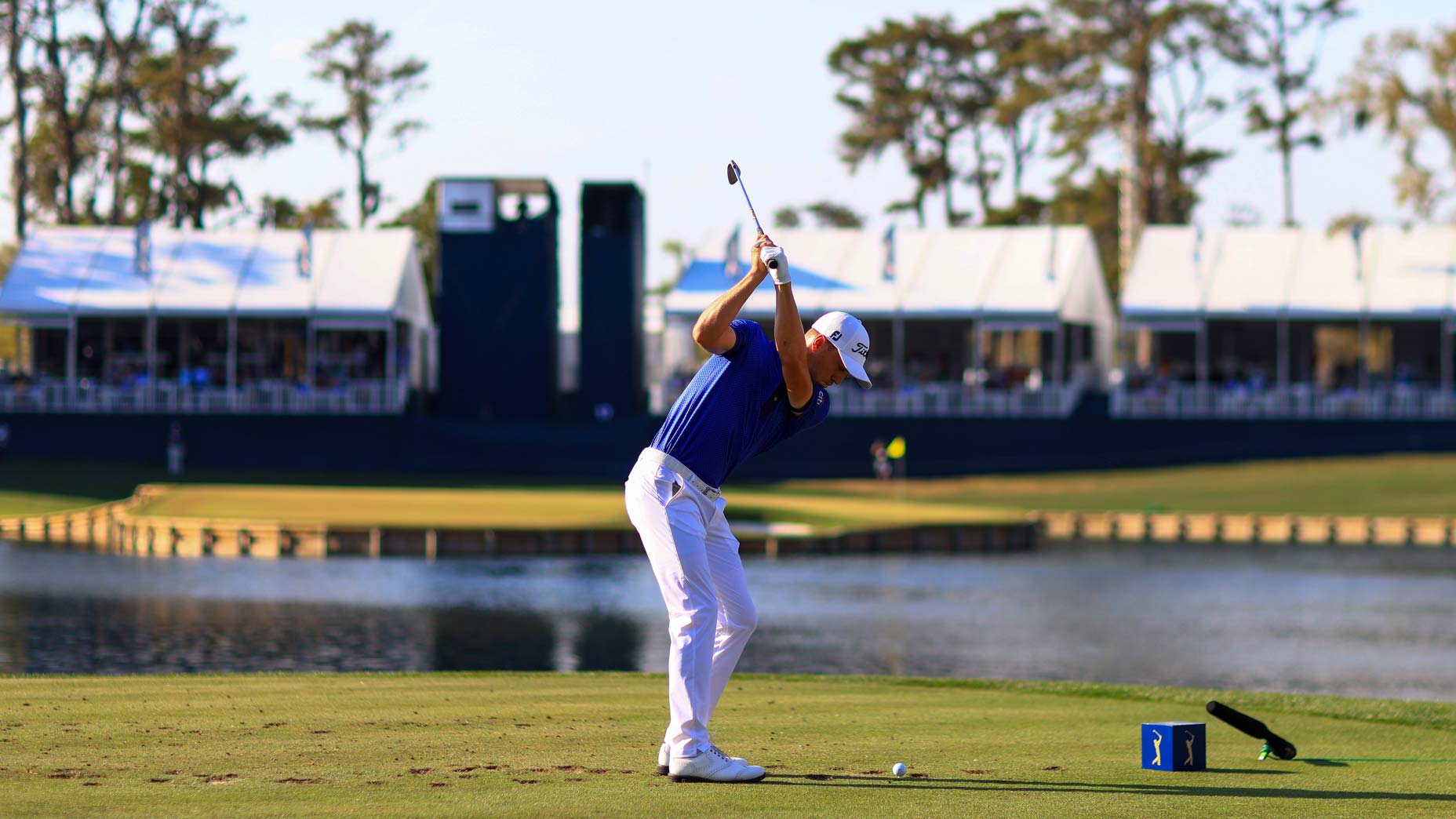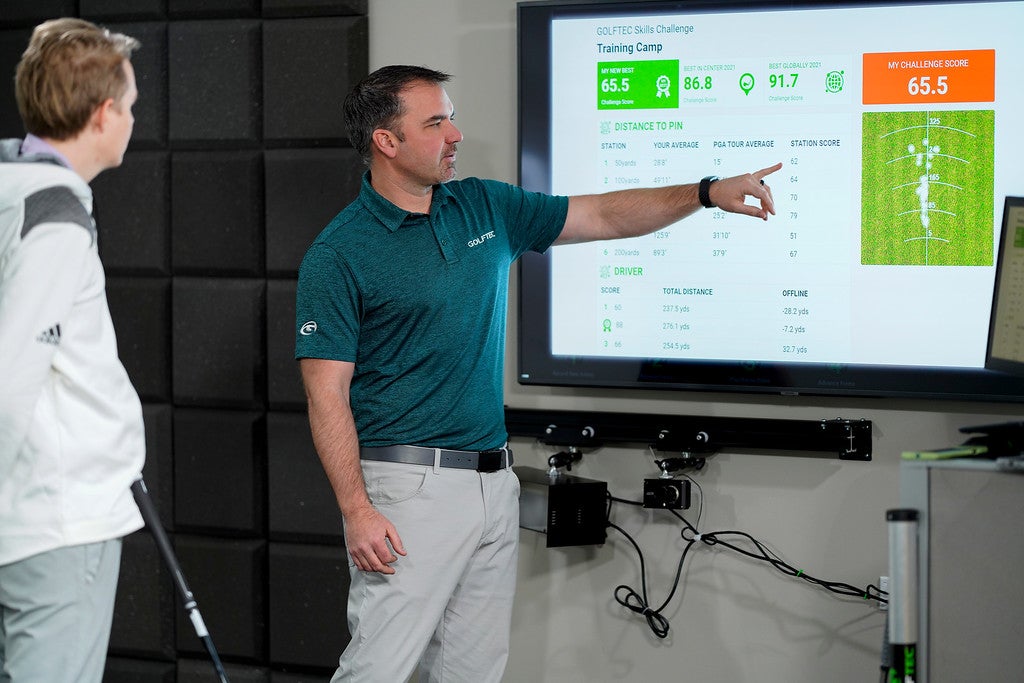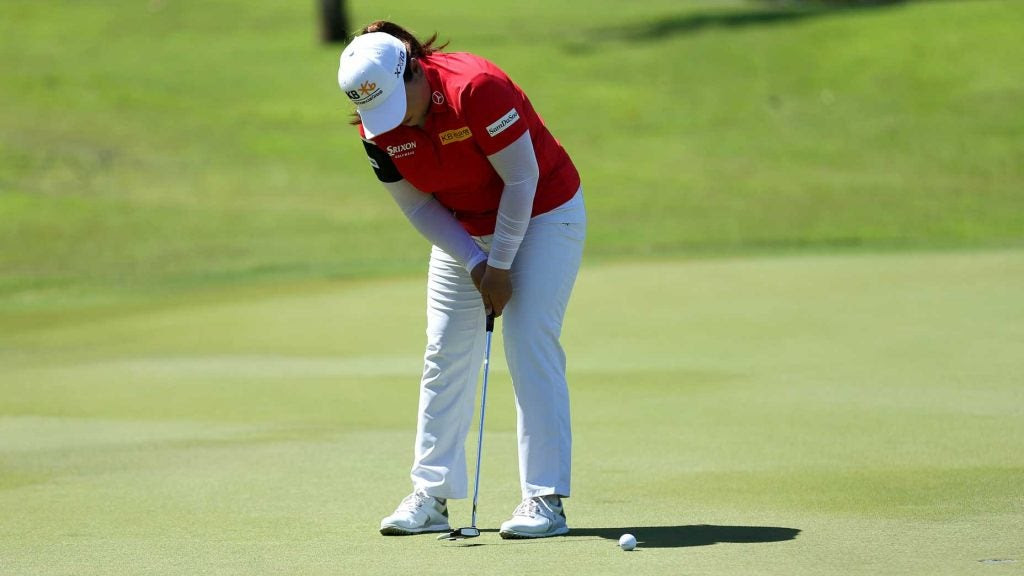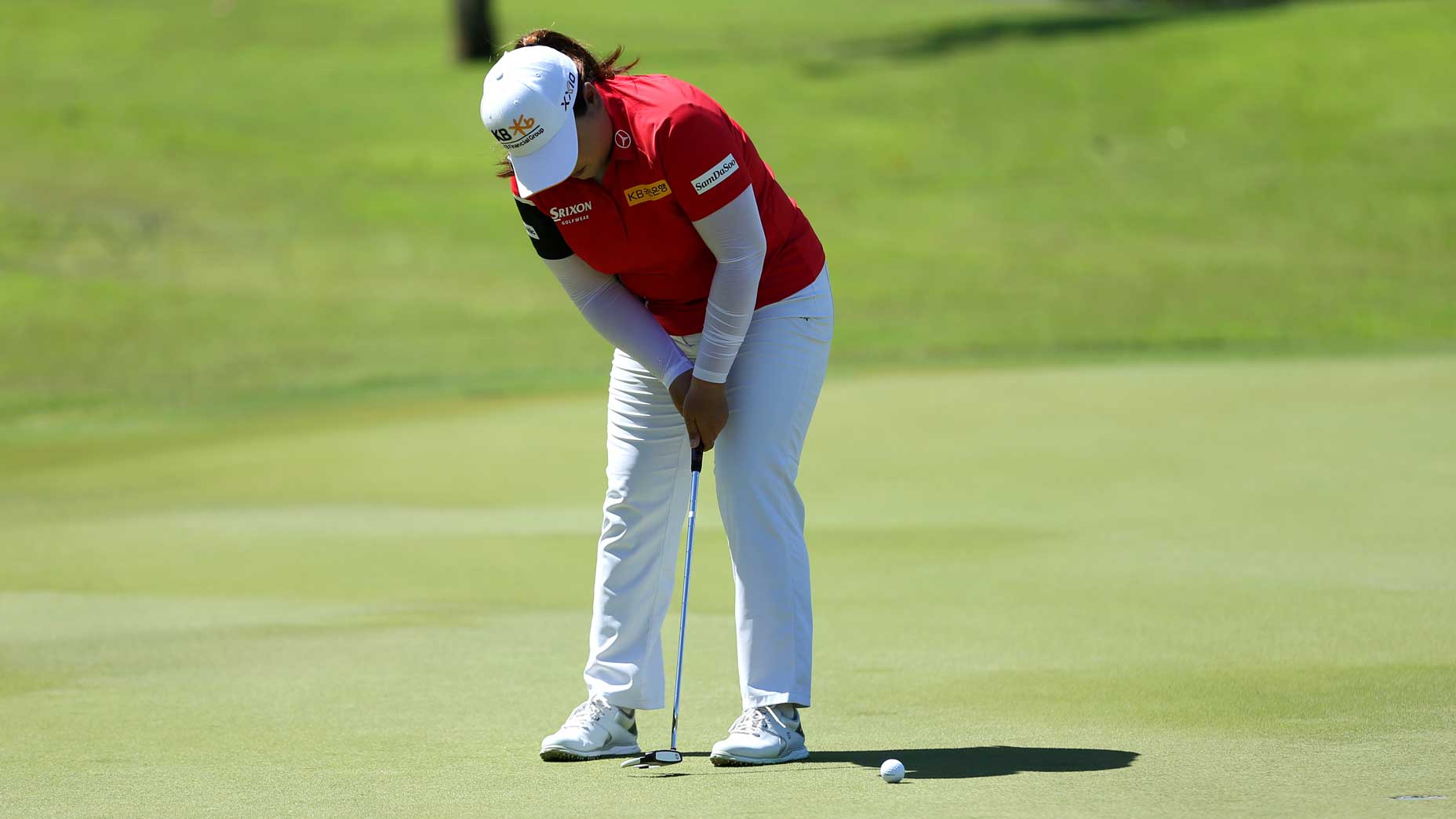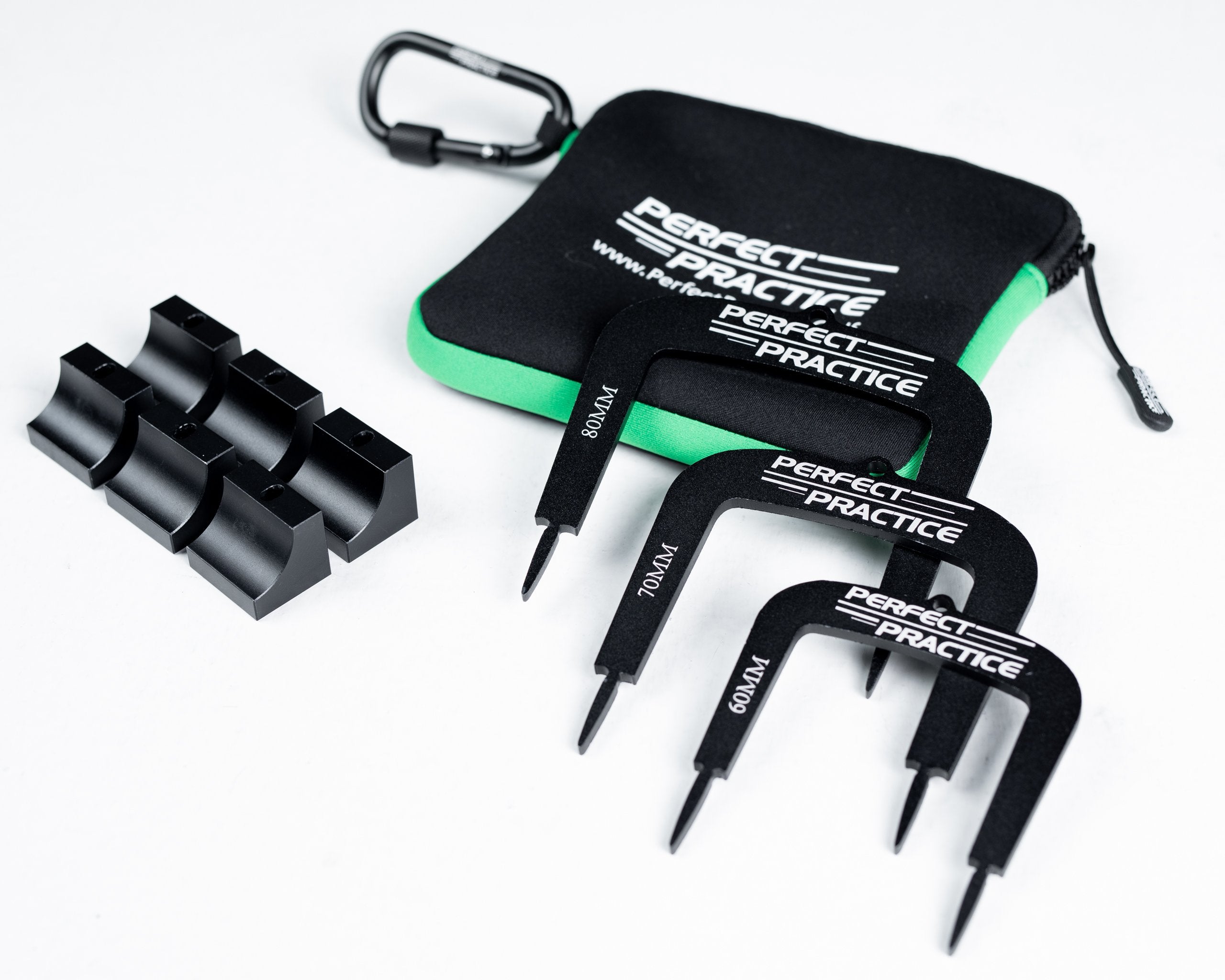■ INSTRUCTION
From analyzing GOLFTEC data, we know that the best players move their hips toward the target at impact. Here's how you can, too.
JACK DEMPSEY
I’ve looked at swing data for GOLFTEC for the better part of two decades, giving us a great understanding of, among many things, what separates good players from those who constantly struggle with technique. One of the many data points we look at when analyzing swings is hip sway at the top of the backswing. It’s such a critical factor that often it’s the first thing we look at when diagnosing a new player’s improvement plan.
Hip sway, in the most basic terms, is the difference between your hip position at the top of the backswing (closer or farther from the target) and its position at address. Trust me: Players hips always move one way or the other.
At GOLFTEC we’ve found that the best golfers move their hips slightly toward the target — roughly four inches — as they swing from address to the top. An easy way to work on this is to control how your lead knee flexes throughout your backswing. Tip: Don’t allow your lead knee to work away from the target. Instead, let it flex over your lead toe.
This drill should help. Place a golf bag just in front of your lead hip as you set up. Take the club to the top of your backswing while getting your lead hip to just graze the side of the bag (above). If you do this, you’ll produce just the right amount of hip sway and be a much more consistent ball striker.
Nick Clearwater is the vice president of instruction at GOLFTEC in Denver, Colo.
All of our market picks are in
This drill will improve your hip power and make you a more consistent golfer
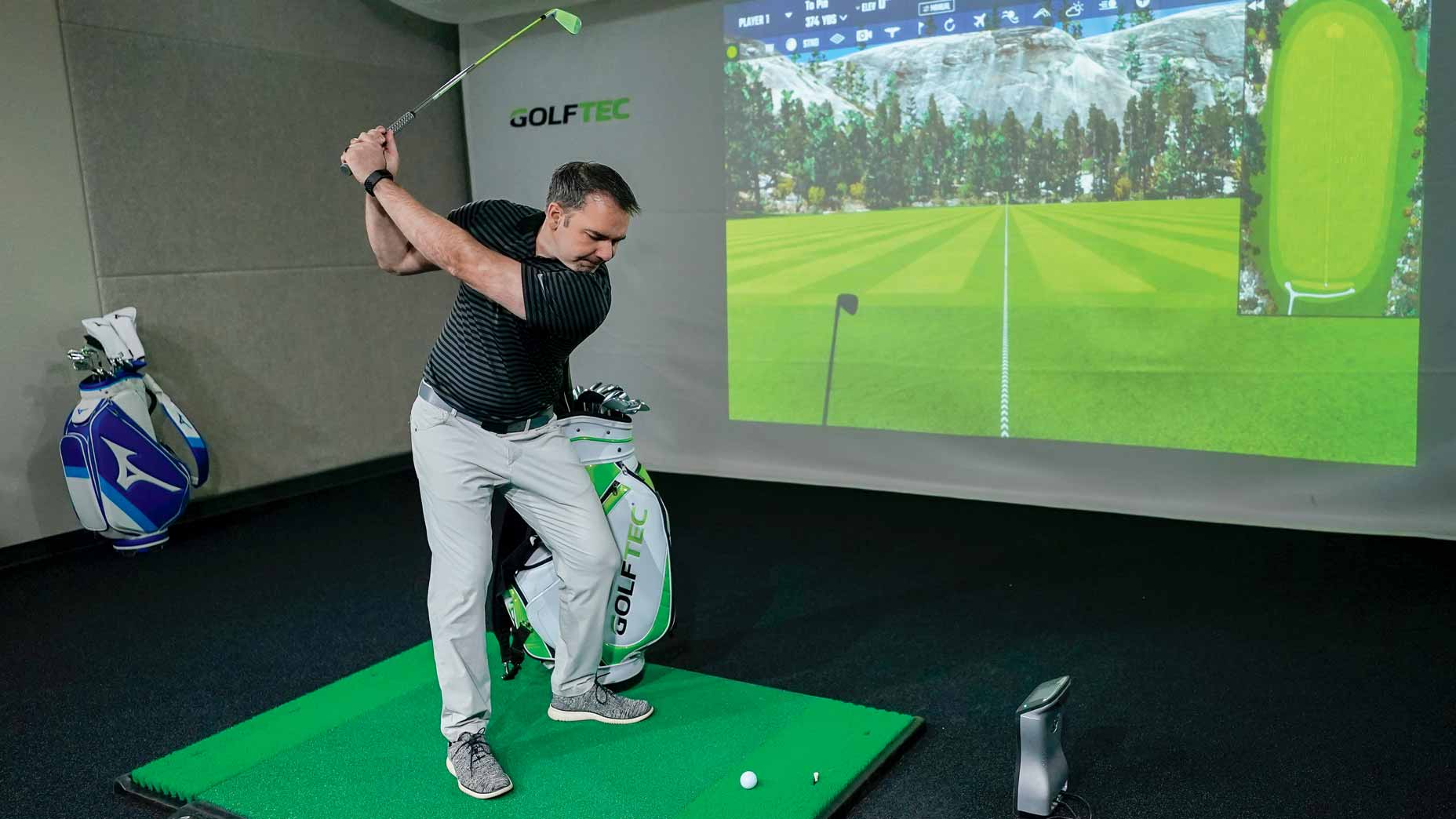
From analyzing GOLFTEC data, we know that the best players move their hips toward the target at impact. Here's how you can, too.
JACK DEMPSEY
I’ve looked at swing data for GOLFTEC for the better part of two decades, giving us a great understanding of, among many things, what separates good players from those who constantly struggle with technique. One of the many data points we look at when analyzing swings is hip sway at the top of the backswing. It’s such a critical factor that often it’s the first thing we look at when diagnosing a new player’s improvement plan.
Hip sway, in the most basic terms, is the difference between your hip position at the top of the backswing (closer or farther from the target) and its position at address. Trust me: Players hips always move one way or the other.
At GOLFTEC we’ve found that the best golfers move their hips slightly toward the target — roughly four inches — as they swing from address to the top. An easy way to work on this is to control how your lead knee flexes throughout your backswing. Tip: Don’t allow your lead knee to work away from the target. Instead, let it flex over your lead toe.
This drill should help. Place a golf bag just in front of your lead hip as you set up. Take the club to the top of your backswing while getting your lead hip to just graze the side of the bag (above). If you do this, you’ll produce just the right amount of hip sway and be a much more consistent ball striker.
Nick Clearwater is the vice president of instruction at GOLFTEC in Denver, Colo.
All of our market picks are independently selected and curated by the editorial team. If you buy a linked product, GOLF.COM may earn a fee. Pricing may vary.
Swing Evaluation for GOLF.com Readers
BOOK NOWSponsored: GolfTEC SwingTRU Motion Study--Hip Sway (Through Impact)
Sponsored: GolfTEC SwingTRU Motion Study--Hip Sway (Through Impact)

